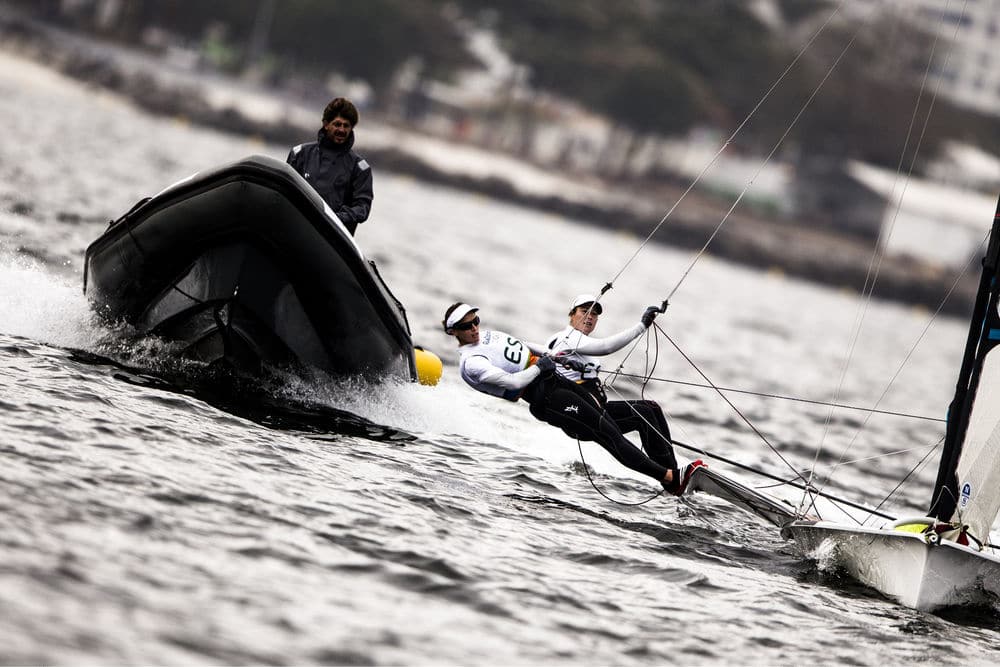
The Rio 2016 Olympic Sailing Competition
After graduating from college, and concluding my scholastic sailing career, I assumed I was done taking notes. However, I quickly realized the complication and variety in the boats I was racing after college made documenting my days on the water more important than ever.
In addition to the standard sail controls, the 505, for example, has adjustable shrouds and a mast ram. I initially thought I could remember the best settings for any given condition and duplicate them at will. I was wrong. Even if the class is fairly simple, it’s impossible to track everything. Getting in the habit of documenting your days on the water will allow you to improve more quickly and avoid wasting time re-learning the same lesson.
The hardest part about taking notes is getting started; just as bad habits are hard to break, good ones can be a challenge to start. For many sailors, the first inclination after a long day on the water is to kick back with a beer. This, of course, is the best time to jot down a few thoughts on the day. The key is to get the entire crew involved. If you have to motor in from the racecourse, this is a great time to gather the team in the cockpit and reflect on the day. If your boat is too small for that, then wait until you’ve lowered your sails and spend a just a few minutes debriefing before finishing your de-rigging.
Having a template makes the process much easier. It should be easy to understand and fill out. However, for it to really work it must be customized to suit each team or sailor.
For standard weeknight racers, the template should be simple. Most of the data on boat, sails, etc. can be filled out ahead of time. The most important data for this type of sailor relates to sail trim and tactical considerations. When repeatedly sailing the same boat, large improvements in speed can come from knowing the fast settings for each point of sail, and wind and water condition. For example, “Having the top telltale on the main stalled 100 percent of time is only fast with flat water.” From a tactical standpoint, every venue will have its idiosyncrasies for a given wind and/or current direction. Noting what worked, or didn’t work, is the best way to commit these nuances to memory.
For a more serious team that travels to events around the country, the template will be a bit different. Sail selection and rig tune will play a large part, so this information will take up a bigger portion of the debrief. You’ll want to note what sails worked best in what conditions. You’ll also want to track your rig adjustments and whether particular settings seemed fast or slow. Notes on each regatta venue are important as well because many events are in the same places year after year.

Frostbiting in a dinghy demands a slightly different focus. Sail selection and rig tuning aren’t all that important. A template for this sailor would focus on sailing technique and tactical lessons, including geographic effects on the wind and short-course fleet management. Such notes could include, “Wind tends to bend and blow from the closest land to the course, making that side favored.” Or, “In shifty winds, starting in the middle of the line, but toward the boat, was the best strategy for consistency.”
The ability to take notes in a consistent manner is important. I use bullet points to offset each individual thought. This keeps things short and simple. For some people, complete sentences may be beneficial. However, what is most important is your ability to quickly scan and understand your notes weeks, months, or years later.
Specific measurements are a great tool. Rather than recording that you sailed with a tight outhaul, note the distance between the clew and the end of the boom or the foot and the middle of the boom. Wind conditions can be difficult to describe in just a few words. Where numbers don’t apply, the use of consistent adjectives is important. To describe the volatility of any breeze, I choose between steady, somewhat shifty, shifty, land-effect shifts, and Charles-River-or ultra-shifty.
I also try to include the timing and magnitude of the shifts and, if the wind was steadily trending to one direction, how much it changed per hour. Similar descriptions of current are also appropriate.
Once you have a collection of debriefs, get them organized. This too, will depend on the type of racing you do. Weeknight racers and frostbiters, anyone who races mostly in the same venue on the same boat, should organize their notes by wind direction. Thus, before any race, they can quickly review all the previous days with the same wind. For national campaigners, notes should be sorted by regatta or training session. This provides a more linear look at a team’s development.
Great notes aren’t worth the paper they are written on unless you know how to use them. National campaigners, when reviewing the data from a recent regatta, should look for trends, both strengths and weaknesses, to help shape the next training session. For more casual racers, compiling a list of trimming notes from a team’s best races can form the backbone of a trim guide. When prepping for a big regatta, or starting another season of twilight racing, get the crew together and review the past season’s notes to remember what worked, and what didn’t.
Note taking seems boring and initially you may question whether the extra effort will help your sailing. Don’t give up. The payback will come. You will be amazed how easy it is and how quickly you stop repeating the same mistakes.









